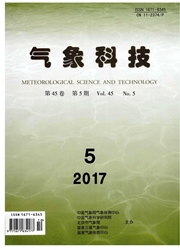

 中文摘要:
中文摘要:
对2010年5月14日一次降水性层状云的飞机DMT探测资料进行了分析。这次降水形成的主要微物理机制是"播种-供给"过程。冰化层降水尺度的粒子浓度高,高于其他各层。过冷层冰水粒子共存,液态水含量丰富,为冰水转化和淞附增长提供了有利的增长环境条件,是降水增长的关键层。这次降水云系"播种-供给"机制表现充分,但云暖层薄,暖层增长不充分,云底高,蒸发层厚,是不能产生强降水的主要云微物理原因。
 英文摘要:
英文摘要:
The aircraft DMT observation data from a stratus-cloud precipitation on 14 May 2010 are analyzed. The results show that the main microphysical mechanism in the precipitation was a "seeder- feeder" process. The concentration of precipitating particles in the ice layer was higher than those in the other layers. Ice and water particles coexisted in the supercooled layer, which had abundant liquid water content (LWC), was favorable for the ice water transformation and ice riming growth and was a crucial layer for precipitation. The mechanism of this precipitating cloud was a typical "seeder-feeder" process, but the precipitating cloud had the characteristics of high cloud base, thin warm level, thick evaporation layer and lacking of warm rain growing process, so that there was no strong rainfall.
 同期刊论文项目
同期刊论文项目
 同项目期刊论文
同项目期刊论文
 Megacity impacts on regional ozone formation: observations and WRF-Chem modeling for the MIRAGE-Shan
Megacity impacts on regional ozone formation: observations and WRF-Chem modeling for the MIRAGE-Shan In-SituAircraft Measurements of the Vertical Distribution of Black Carbon in the LowerTroposphere of
In-SituAircraft Measurements of the Vertical Distribution of Black Carbon in the LowerTroposphere of Effects of meteorology and secondary particle formation on visibility during heavy haze events in Be
Effects of meteorology and secondary particle formation on visibility during heavy haze events in Be Vertical and horizontal distributions of ozone over Beijing from 2007-2010: Analysis of aircraft mea
Vertical and horizontal distributions of ozone over Beijing from 2007-2010: Analysis of aircraft mea 期刊信息
期刊信息
